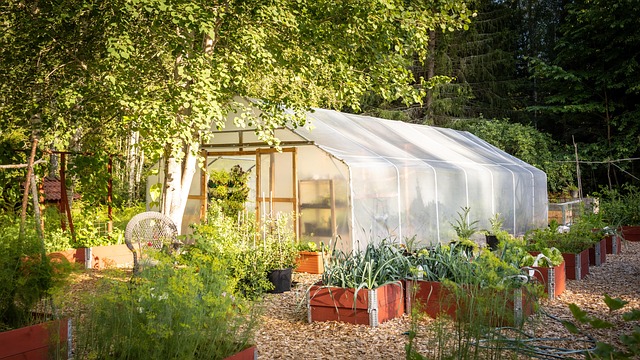Garden Chores in April
go.ncsu.edu/readext?1062830
en Español / em Português
El inglés es el idioma de control de esta página. En la medida en que haya algún conflicto entre la traducción al inglés y la traducción, el inglés prevalece.
Al hacer clic en el enlace de traducción se activa un servicio de traducción gratuito para convertir la página al español. Al igual que con cualquier traducción por Internet, la conversión no es sensible al contexto y puede que no traduzca el texto en su significado original. NC State Extension no garantiza la exactitud del texto traducido. Por favor, tenga en cuenta que algunas aplicaciones y/o servicios pueden no funcionar como se espera cuando se traducen.
Português
Inglês é o idioma de controle desta página. Na medida que haja algum conflito entre o texto original em Inglês e a tradução, o Inglês prevalece.
Ao clicar no link de tradução, um serviço gratuito de tradução será ativado para converter a página para o Português. Como em qualquer tradução pela internet, a conversão não é sensivel ao contexto e pode não ocorrer a tradução para o significado orginal. O serviço de Extensão da Carolina do Norte (NC State Extension) não garante a exatidão do texto traduzido. Por favor, observe que algumas funções ou serviços podem não funcionar como esperado após a tradução.
English
English is the controlling language of this page. To the extent there is any conflict between the English text and the translation, English controls.
Clicking on the translation link activates a free translation service to convert the page to Spanish. As with any Internet translation, the conversion is not context-sensitive and may not translate the text to its original meaning. NC State Extension does not guarantee the accuracy of the translated text. Please note that some applications and/or services may not function as expected when translated.
Collapse ▲VEGETABLES
*Wait several days following a rain to work or turn the soil.
*When planning the vegetable garden, Avoid planting related vegetables (same family) in the same location more often than once every three years. This is known as Crop Rotation. Crop rotation is the practice of growing different types of crops in succession on the same land chiefly to preserve the productive capacity of the soil by easing insect, disease, and weed problems.
*Set out transplants for cool-season crops such as cabbage, broccoli and lettuce. Make sure they are hardened off before planting into the garden.
*Still time to plant potatoes as well as seeds for lettuce, beets and leafy greens.
*Still time to start transplants of warm-season vegetables.
*Begin “hardening off” warm-season transplants a week or two before planting in early to mid-May.
When is it safe to plant my tomatoes or other tender plants?
The safe planting date for tender summer annuals in our area is
Mother’s Day (May 11, 2025)
Western North Carolina Planting Calendar for Annual, Vegetables, Fruits and Herbs
*Have row cover fabric handy if frost-sensitive crops are planted before May.
Read this article on the Average Last Frost Date and how to prepare!
* Is the soil warm enough to plant vegetable seeds? It all depends on what you want to plant. Lettuce, Radish and Pea seeds can germinate around 40 degrees. Corn, Cucumbers and Pumpkin seeds do better closer to 60 degrees.
CURRENT SOIL TEMPERATURE AT THE
UNCA ASHEVILLE WEATHER TOWER is 53.5 degree F.
GO HERE TO SEARCH FOR ANOTHER LOCATION NEAR YOU!
ORNAMENTALS
*Apply a fresh layer of mulch to landscape beds before summer weeds germinate. Pull the winter weeds first. Only add enough mulch so that the total depth of mulch is not more than 4 inches.
*Try planting those spent Easter lilies in the garden. Keep them indoors until May, and then plant them about 5 inches deep in a sunny location. They probably will not bloom again this year, but should be back next summer.
*Let the foliage of the spring bulbs die most of the way down before cutting the leaves. The bulb needs to absorb that energy for next spring.
*As soon as spring blooming shrubs have finished blooming, it’s time to prune if they have gotten too large.
Check out this 4 part series of publications
on Pruning Trees and Shrubs from NC State Extension
*Do not plant frost-tender (summer annual) flowers before May unless you will be able to cover them in case of frost.
*Don’t let winter annuals like henbit and chickweed go to seed. Hand pulling is effective where broadleaf herbicides are nonselective and can harm surrounding landscape plants.
FRUIT
*Pull weeds in the strawberry bed and put straw mulch between the rows.
*Weed garlic and asparagus beds to reduce competition.
*Fertilize fruit trees, blueberries, grape wines and brambles.
*Finish pruning brambles, grape vines and fruit trees.
QUICK REFERENCES ON Small Fruits & Tree Fruits
LAWNS
*DO NOT fertilize cool-season lawns (fescue and bluegrass). Nitrogen applied this late is an invitation for brown patch fungus disease in June.
*Maintain mowing height for fescue lawns at 2.5 to 3 inches.
*Reduce lawn area and cut out problem areas:
– Wet and/or shady
– Constant, heavy traffic areas
– Difficult to maintain areas: narrow strips, tight angles, under trees
*Expand mulched area around trees and beds.
*Tolerate diversity. Many weeds provide important resources for pollinators especially early spring bloomers.
Pollinator Friendly Bee Lawns
Tall Fescue Lawn Maintenance Calendar





